
Although many of us mark the end of May as the official beginning of summer, we have this rare occasion to reflect on and honor those who so freely gave the ultimate sacrifice to provide us the freedoms we enjoy today.
As you prepare for Memorial Day, keep these traditions in mind:
- The American flag should be hung at half-staff until noon on Memorial Day, then raised to the top of the staff.
- Since 2000, when Congress passed legislation, all Americans are encouraged to pause for a National Moment of Remembrance at 3 p.m. local time.
Please remember to honor all those Americans who have given their life in military service to our great country.
Remember to recognize the service of those who still serve.
Federally Employed Women salutes you for your service and sacrifice!
As America celebrates Memorial Day, we pay tribute to those who have given their lives in our nation’s wars.
~ John McHugh






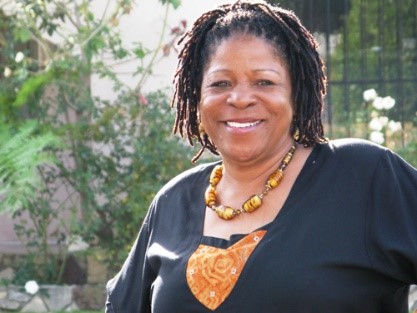 Ms. Burton is Founder and Executive Director of A New Way of Life Re-Entry Project. Her non-profit provides women ex-offenders a home and helps them stay drug-free, find work, and reunite with family. The organization has provided direct service to over 1,000 women. Ms. Burton was inspired to start the organization after serving multiple drug sentences and turning her life around.
Ms. Burton is Founder and Executive Director of A New Way of Life Re-Entry Project. Her non-profit provides women ex-offenders a home and helps them stay drug-free, find work, and reunite with family. The organization has provided direct service to over 1,000 women. Ms. Burton was inspired to start the organization after serving multiple drug sentences and turning her life around. Ms. Dunkle played a key role in the implementation of Title IX, guaranteeing equal opportunity to women and girls in education. Her groundbreaking 1974 report documenting discrimination against female athletes became the blueprint for the Title IX regulations on athletics. In 1975 Ms. Dunkle became the first Chair of the National Coalition for Women and Girls in Education.
Ms. Dunkle played a key role in the implementation of Title IX, guaranteeing equal opportunity to women and girls in education. Her groundbreaking 1974 report documenting discrimination against female athletes became the blueprint for the Title IX regulations on athletics. In 1975 Ms. Dunkle became the first Chair of the National Coalition for Women and Girls in Education.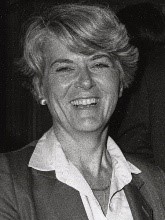 Ms. Ferraro was a politician, three term Congresswoman (D N.Y. 1979-85), and first woman major party candidate for Vice President (1984). President Clinton appointed her U.S. Ambassador to the United Nations Commission on Human Rights where she served from 1993-96. She also served as vice-chair of the U.S. delegation to the Fourth World Conference on Women in Beijing (1995).
Ms. Ferraro was a politician, three term Congresswoman (D N.Y. 1979-85), and first woman major party candidate for Vice President (1984). President Clinton appointed her U.S. Ambassador to the United Nations Commission on Human Rights where she served from 1993-96. She also served as vice-chair of the U.S. delegation to the Fourth World Conference on Women in Beijing (1995).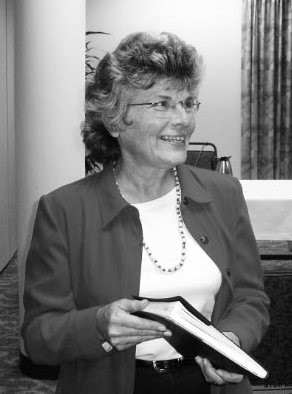 Guy is a leading LGBT and women’s rights activist. She co-founded multiple organizations including the Women’s Building, La Casa de las Madres, SF Women Against Rape, and the Women’s Foundation of California. Ms. Guy was one of the LGBT activists featured in the 2017 miniseries When We Rise. She is also an advocate for women’s access to health care.
Guy is a leading LGBT and women’s rights activist. She co-founded multiple organizations including the Women’s Building, La Casa de las Madres, SF Women Against Rape, and the Women’s Foundation of California. Ms. Guy was one of the LGBT activists featured in the 2017 miniseries When We Rise. She is also an advocate for women’s access to health care. Jayaraman is Co-founder and Co-director of the Restaurant Opportunities Centers United (ROC United) and Director of the Food Labor Research Center at University of California, Berkeley. She is a leading advocate for restaurant workers, fighting for guaranteed sick and safe leave and an end the two-tiered minimum wage (a victory ROC has already won in 7 states).
Jayaraman is Co-founder and Co-director of the Restaurant Opportunities Centers United (ROC United) and Director of the Food Labor Research Center at University of California, Berkeley. She is a leading advocate for restaurant workers, fighting for guaranteed sick and safe leave and an end the two-tiered minimum wage (a victory ROC has already won in 7 states). Jiménez is Executive Director and Co-founder of United We Dream (UWD), the largest immigrant youth-led organization in the country. She was part of the team that led to the historic victory of the Deferred Action for Childhood Arrivals (DACA) program in 2012. In 2017 Jiménez was awarded a MacArthur Foundation Fellowship “Genius Grant.”
Jiménez is Executive Director and Co-founder of United We Dream (UWD), the largest immigrant youth-led organization in the country. She was part of the team that led to the historic victory of the Deferred Action for Childhood Arrivals (DACA) program in 2012. In 2017 Jiménez was awarded a MacArthur Foundation Fellowship “Genius Grant.”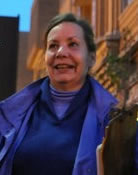 Langelan is a leader in the global effort to end gender-based violence and an expert in nonviolent action. Called the “godmother of direct intervention,” she pioneered feminist self-defense training, the direct-action toolkit to derail harassers at work and on the street, the first major city-wide anti-harassment campaign, and effective, comprehensive action for public transit systems. Her intervention toolkits are used around the world.
Langelan is a leader in the global effort to end gender-based violence and an expert in nonviolent action. Called the “godmother of direct intervention,” she pioneered feminist self-defense training, the direct-action toolkit to derail harassers at work and on the street, the first major city-wide anti-harassment campaign, and effective, comprehensive action for public transit systems. Her intervention toolkits are used around the world.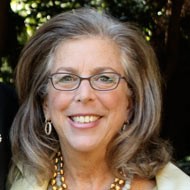 Mayerson is Directing Attorney of the Disability Rights Education and Defense Fund (DREDF). She has been a leading force behind groundbreaking legislation including the Americans with Disabilities Act (ADA) and the Handicapped Children’s Protection Act. Ms. Mayerson has contributed to many key disability rights cases before the U.S. Supreme Court.
Mayerson is Directing Attorney of the Disability Rights Education and Defense Fund (DREDF). She has been a leading force behind groundbreaking legislation including the Americans with Disabilities Act (ADA) and the Handicapped Children’s Protection Act. Ms. Mayerson has contributed to many key disability rights cases before the U.S. Supreme Court.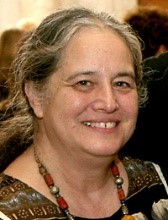 Moss Greenberg is a lifelong feminist activist, committed to ending social and educational inequity. She served as National Director of the National Association for Multicultural Education (NAME) where she spearheaded efforts to address intersecting forms of discrimination. Ms. Moss Greenberg also served as Founding Executive Director of the Maryland Women’s Heritage Center.
Moss Greenberg is a lifelong feminist activist, committed to ending social and educational inequity. She served as National Director of the National Association for Multicultural Education (NAME) where she spearheaded efforts to address intersecting forms of discrimination. Ms. Moss Greenberg also served as Founding Executive Director of the Maryland Women’s Heritage Center. Murray was a groundbreaking women’s rights and civil rights activist and attorney. She coined the term “Jane Crow” articulating the combined sexism and racism faced by African American women. Ms. Murray served on the Presidential Commission on the Status of Women and was a co-founder of the National Organization for Women (NOW). In 1977 Murray became the first black woman to be ordained as an Episcopal priest and she was among the first group of women to become priests in that church.
Murray was a groundbreaking women’s rights and civil rights activist and attorney. She coined the term “Jane Crow” articulating the combined sexism and racism faced by African American women. Ms. Murray served on the Presidential Commission on the Status of Women and was a co-founder of the National Organization for Women (NOW). In 1977 Murray became the first black woman to be ordained as an Episcopal priest and she was among the first group of women to become priests in that church.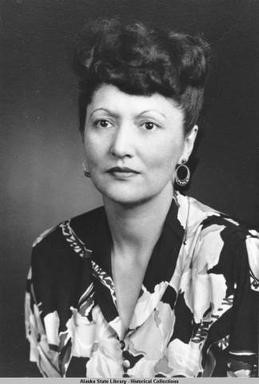 Peratrovich was a civil rights activist on behalf of Alaska Natives. She was a leader in the Alaska Native Sisterhood and led the fight against the pervasive Lorettadiscrimination and segregation faced by her community. Ms. Peratrovich is credited as the leading force behind passage of the Alaska territory’s Anti-Discrimination Act in 1945, the first such law in the U.S. https://www.youtube.com/watch?v=U9To3pgzh00
Peratrovich was a civil rights activist on behalf of Alaska Natives. She was a leader in the Alaska Native Sisterhood and led the fight against the pervasive Lorettadiscrimination and segregation faced by her community. Ms. Peratrovich is credited as the leading force behind passage of the Alaska territory’s Anti-Discrimination Act in 1945, the first such law in the U.S. https://www.youtube.com/watch?v=U9To3pgzh00 Ms. Ross is a feminist activist and leader in the reproductive justice movement. She was the Co-founder and Executive Director of the National Center for Human Rights Education and Co-founder and National Coordinator for the Sister song Women of Color Reproductive Justice Collective. In the 1970s, Ms. Ross was one of the first African American women to direct a rape crisis center. http://www.lorettaross.com/
Ms. Ross is a feminist activist and leader in the reproductive justice movement. She was the Co-founder and Executive Director of the National Center for Human Rights Education and Co-founder and National Coordinator for the Sister song Women of Color Reproductive Justice Collective. In the 1970s, Ms. Ross was one of the first African American women to direct a rape crisis center. http://www.lorettaross.com/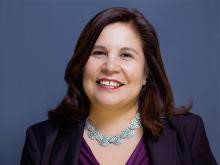 Salas is Executive Director of the Coalition for Humane Immigrant Rights (CHIRLA) and is a leading spokesperson for federal immigration policy reform. In C.A., she helped win in-state tuition for undocumented students and established day labor job centers that have become a national model. Ms. Salas is a coalition builder, connecting diverse groups at the state and national level.
Salas is Executive Director of the Coalition for Humane Immigrant Rights (CHIRLA) and is a leading spokesperson for federal immigration policy reform. In C.A., she helped win in-state tuition for undocumented students and established day labor job centers that have become a national model. Ms. Salas is a coalition builder, connecting diverse groups at the state and national level.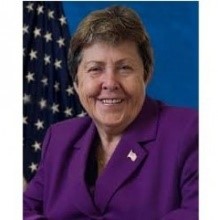 Ms. Schwartz is a Vietnam veteran and activist for the rights of women veterans, testifying more than 24 times to Congress on women veterans’ issues. She served as Connecticut’s Commissioner Commandant of Veterans Affairs and was appointed by President Obama to serve as Assistant Secretary of Veteran Affairs for Policy and Planning.
Ms. Schwartz is a Vietnam veteran and activist for the rights of women veterans, testifying more than 24 times to Congress on women veterans’ issues. She served as Connecticut’s Commissioner Commandant of Veterans Affairs and was appointed by President Obama to serve as Assistant Secretary of Veteran Affairs for Policy and Planning.